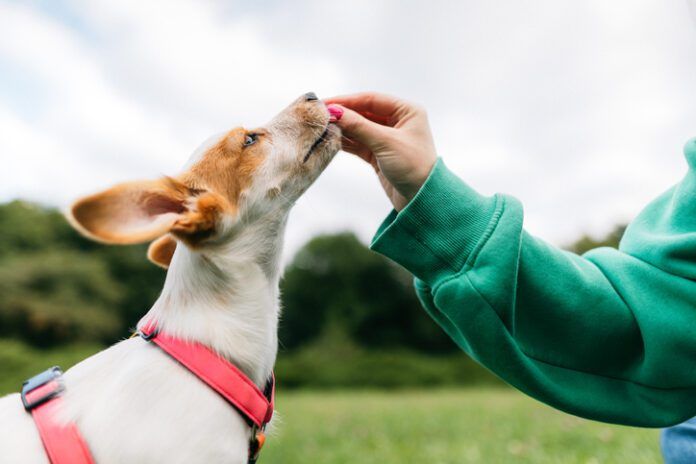Excerpt from Beyond the Backyard: Train Your Dog to Listen Anytime, Anywhere!
This book assumes that your dog already knows how to perform your target behaviors (also called base behaviors). What I haven’t told you yet is that what a dog knows is actually contextual. In other words, your dog probably doesn’t know what you think she does unless you’ve done specific training. That specific training, called generalization, is the princess of applying information from one context to another. It’s very important to do this because dogs are notoriously poor at generalization.
Does your dog know how to sit on command? Let’s find out!
Go to your dog’s most familiar training area and grab a pile of delicious cookies. Make sure she knows you have them and that she is eager to earn them. Now face your dog and ask her to sit. Your dog should enthusiastically put her rear end on the ground. Excellent!
Let’s try it again, except with a small change. This time, turn your back on your dog so that you are facing the wall. Ask her to sit.
What happened? I’m willing to bet that she failed to perform. Not because she was unmotivated or fearful. Not because she was distracted or in a new place. And not because she couldn’t hear you. I know all this because the only thing you changed was the direction that you were facing; the first time you were facing your dog and the second time you turned your back from the dog. So what went wrong?
Your dog failed to perform because you changed the context. She learned to sit with you facing her, and now you’ve changed the picture. Your dog isn’t stubborn or bad. Your dog simply has not learned which variables are – or are not – relevant. To be blunt, she doesn’t know “sit”. Instead, she knows “owner standing in front of me in the kitchen holding a cookie in front of my nose and saying the word sit.”
But what if you tried this test and your dog passed? That’s great! She has started to learn to sit. Let’s see just how well she’s learned it. Take your dog to a familiar place and have an obvious motivator in your hand. We want your dog trying her hardest so we can safely conclude that any failure to perform is due to holes in your basic training opposed to lack of motivation.
- Can your dog sit when you are sitting in a chair?
- Can your dog sit when you are sitting on the floor?
- Can your dog sit when you are staring at the ceiling?
- Can your dog sit when you are behind the door?
Come up with as many variations as possible – within reason. The goal is not to cause your dog to fail; the goal is to find the weaknesses in your basic training so that you can work through them. As you do this be sure to maintain sympathy for your dog. She’s trying. So your job is to provide measured challenges so that she can succeed.
For more information on effective training methods, read Beyond the Backyard: Train Your Dog to Listen Anytime, Anywhere!, a special book by Denise Fenzi!






